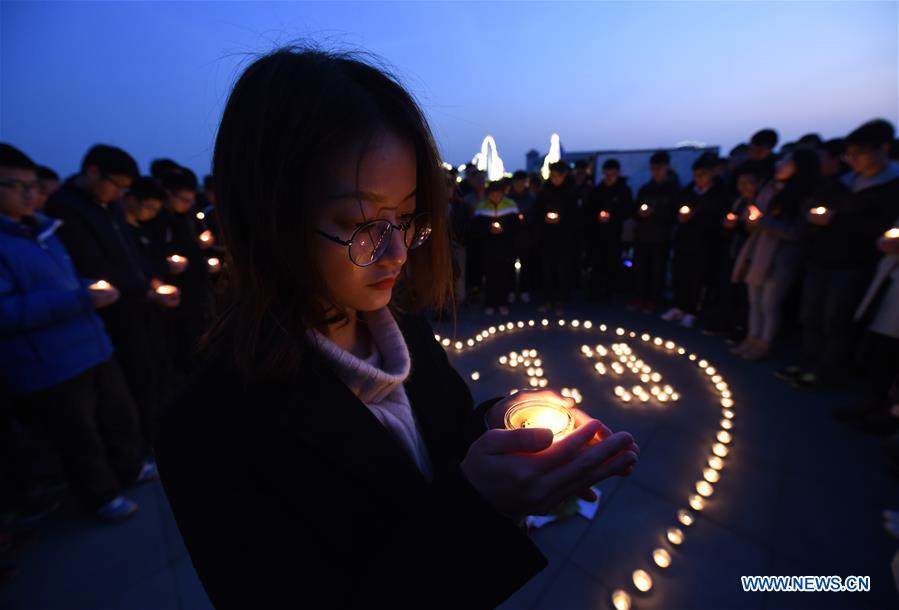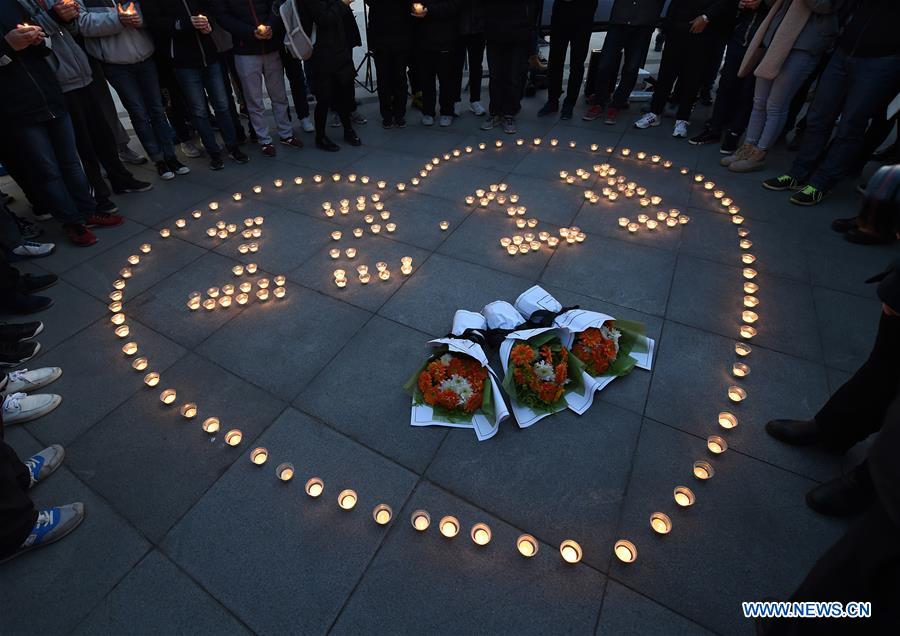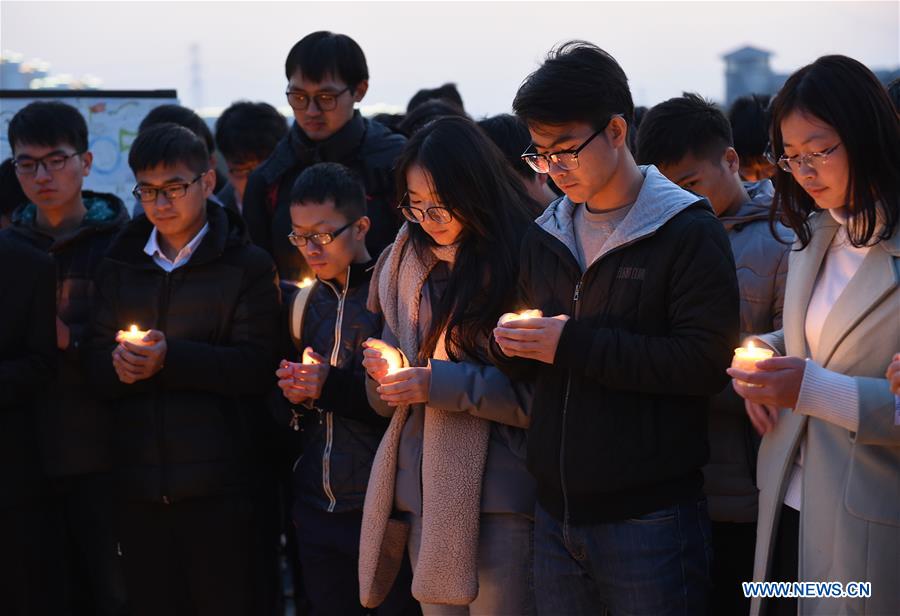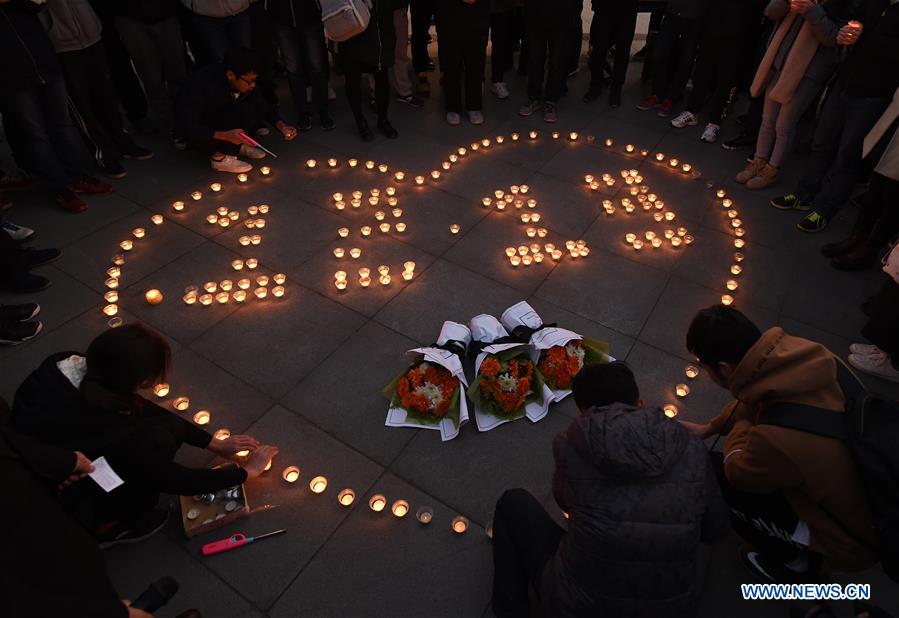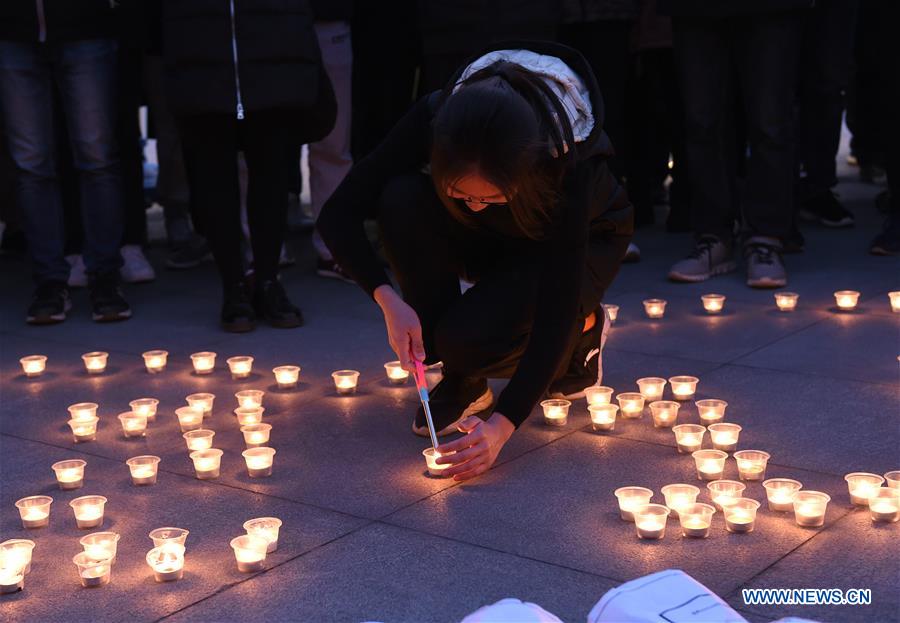Students of Southeast University light candles in commemoration of victims of the Nanjing Massacre in Nanjing, capital of east China's Jiangsu Province, Dec. 12, 2017. Japanese troops captured Nanjing, then China's capital, on Dec. 13, 1937 and started a 40-odd-day slaughter. About 300,000 civilians and unarmed Chinese soldiers were brutally murdered. Over 20,000 women were raped. (Xinhua/Sun Can)
Students of Southeast University light candles in commemoration of victims of the Nanjing Massacre in Nanjing, capital of east China's Jiangsu Province, Dec. 12, 2017. Japanese troops captured Nanjing, then China's capital, on Dec. 13, 1937 and started a 40-odd-day slaughter. About 300,000 civilians and unarmed Chinese soldiers were brutally murdered. Over 20,000 women were raped. (Xinhua/Sun Can)
Students of Southeast University light candles in commemoration of victims of the Nanjing Massacre in Nanjing, capital of east China's Jiangsu Province, Dec. 12, 2017. Japanese troops captured Nanjing, then China's capital, on Dec. 13, 1937 and started a 40-odd-day slaughter. About 300,000 civilians and unarmed Chinese soldiers were brutally murdered. Over 20,000 women were raped. (Xinhua/Sun Can)
Students of Southeast University light candles in commemoration of victims of the Nanjing Massacre in Nanjing, capital of east China's Jiangsu Province, Dec. 12, 2017. Japanese troops captured Nanjing, then China's capital, on Dec. 13, 1937 and started a 40-odd-day slaughter. About 300,000 civilians and unarmed Chinese soldiers were brutally murdered. Over 20,000 women were raped. (Xinhua/Sun Can)
Students of Southeast University light candles in commemoration of victims of the Nanjing Massacre in Nanjing, capital of east China's Jiangsu Province, Dec. 12, 2017. Japanese troops captured Nanjing, then China's capital, on Dec. 13, 1937 and started a 40-odd-day slaughter. About 300,000 civilians and unarmed Chinese soldiers were brutally murdered. Over 20,000 women were raped. (Xinhua/Sun Can)
Students of Southeast University light candles in commemoration of victims of the Nanjing Massacre in Nanjing, capital of east China's Jiangsu Province, Dec. 12, 2017. Japanese troops captured Nanjing, then China's capital, on Dec. 13, 1937 and started a 40-odd-day slaughter. About 300,000 civilians and unarmed Chinese soldiers were brutally murdered. Over 20,000 women were raped. (Xinhua/Sun Can)
Students of Southeast University light candles in commemoration of victims of the Nanjing Massacre in Nanjing, capital of east China's Jiangsu Province, Dec. 12, 2017. Japanese troops captured Nanjing, then China's capital, on Dec. 13, 1937 and started a 40-odd-day slaughter. About 300,000 civilians and unarmed Chinese soldiers were brutally murdered. Over 20,000 women were raped. (Xinhua/Sun Can)
Students of Southeast University light candles in commemoration of victims of the Nanjing Massacre in Nanjing, capital of east China's Jiangsu Province, Dec. 12, 2017. Japanese troops captured Nanjing, then China's capital, on Dec. 13, 1937 and started a 40-odd-day slaughter. About 300,000 civilians and unarmed Chinese soldiers were brutally murdered. Over 20,000 women were raped. (Xinhua/Sun Can)

Students of Southeast University light candles in commemoration of victims of the Nanjing Massacre in Nanjing, capital of east China's Jiangsu Province, Dec. 12, 2017. Japanese troops captured Nanjing, then China's capital, on Dec. 13, 1937 and started a 40-odd-day slaughter. About 300,000 civilians and unarmed Chinese soldiers were brutally murdered. Over 20,000 women were raped. (Xinhua/Sun Can)


















